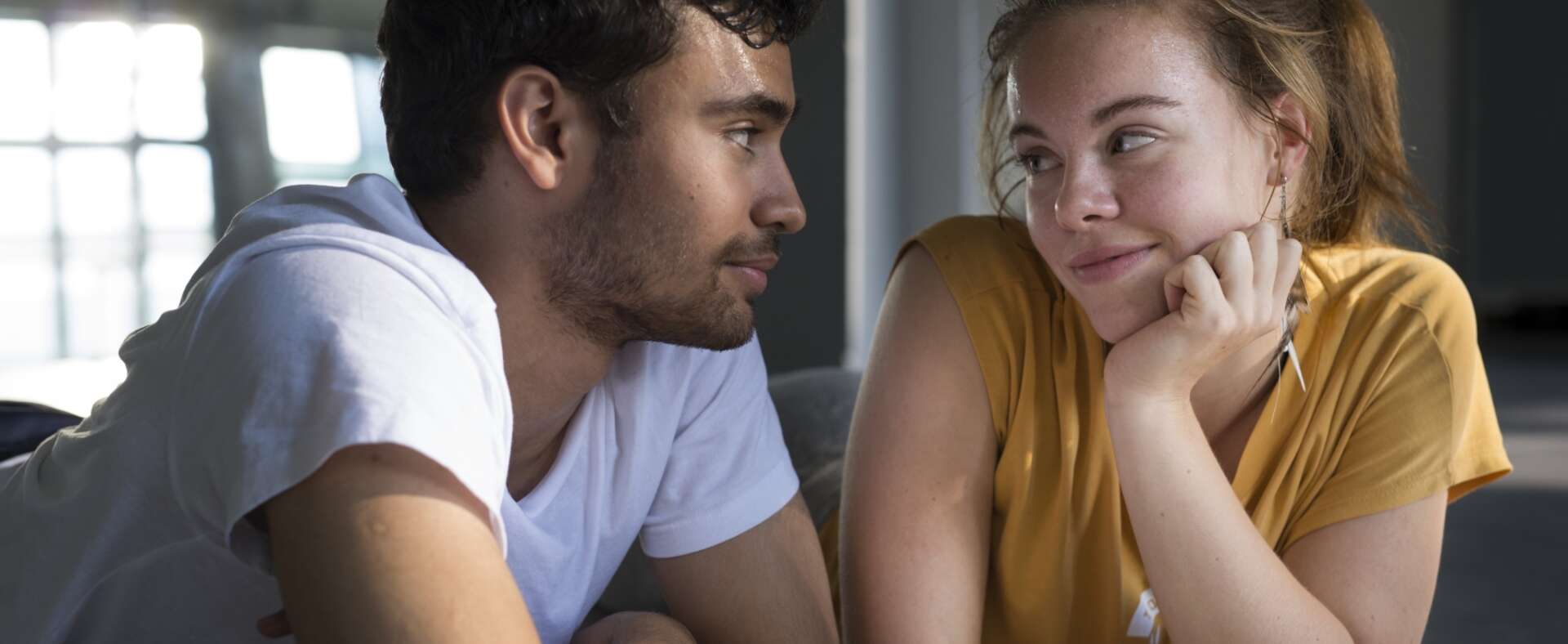WRITTEN BY: Annika Pham
The Norwegian youth film Battle brings a fresh Nordic twist to the classic Hollywood dance films, with Skam actress/dancer Lisa Teige in the lead.

The Norwegian youth film Battle brings a fresh Nordic twist to the classic Hollywood dance films, with Skam actress/dancer Lisa Teige in the lead.
The coming of age film is based on screenwriter/author Maja Lunde’s own eponymous novel. Teige stars as teenage dancer Amalie who is forced to move from her posh neighbourhood in Oslo’s west side to the less privileged eastern side of the city. She meets local street dancer Mikael (Hip hop dancer Fabian Svegaard Tapia) and starts to fall for him. But she can’t let go of her former privileged life, until she is forced to choose and learns to accept her true self in the process. The film was produced by Friland Film, in co-production with Zentropa Sweden, Adomeit Film Denmark and Phanta Basta! in the Netherlands.
Battle opened last weekend at number 5 in Norway and received 4 star reviews (out of 6) in Dagbladet and VG. Nordisk Film handles the domestic release.
How did you get the idea for Battle, supposedly the first Scandi modern dance film?
Katarina Launing. It’s a genre that is rare in our region and it was an honour to give it a try. The author Maja Lunde came to me with this idea and we approached Friland Film with it. We felt confident because of the Skam wave, current focus on youth content and relevance of such a topic for a wide audience.
What attracted you to the rather classic and simple story of girl meets boy from a different social background, who changes through her newfound love? KL: What was interesting in the story was the fact that the young girl is a complex character, quite unsympathetic. But her imperfection is what makes her human, allowing people to identify with her. Concerning the social divide, I made sure not to have clichés about the guy from Oslo’s poorer East-side falling in love with a posh girl from the West side. I wanted to show that they’re human, equal in that sense, just operating within their own social codes and norms. When I started working with this material, I realised that the differences between Oslo’s West and East side weren’t as big as the similarities.
How much research did you do to enter the hiphop/r&b dance community and bring an authentic feel to the film?
KL: I did a lot of research. The story is primarily targeting the younger audience, who in a way is more sceptical than the older audience, and needs to be convinced. If something feels fake, they won’t accept it. Therefore I had to penetrate the circles I wanted to portray, to be true to the language used, the behaviour of those youngsters. The young cast we selected helped a lot through that process. That was the only way to make the story feel organic and real. As it’s a dance film, it was also essential to hire real dancers, and some actors who could dance.
Who are the choreographers who helped you find the dancers and prepare the dance scenes?
KL: Choreographers Camilla Tellefsen and Lise Tiller were both key to find the dancers and gain their confidence. We started casting a year before principal photography. They did amazing jobs as well in translating the character’s traits into dancing. I just sat back and let them take control of the dance scenes.
How much did Lisa Teige have to practise and is Fabian Svegaard Tapia a professional dancer?
KL: Lisa is not only a great actress, but also one of the best modern dancers in her age group in Norway. The only thing she had to learn was hip-hop and break dance. The core of the film is trying to find your own expression. So the dancing didn’t have to be perfect. We wanted to show her personal journey through dance. Fabian is perhaps the best break-dancer in Norway and he’s part of a well known hip hop group. Luckily, he had done amateur theatre as well and had a kind of dream of pursuing acting as well.
What classic dance films were in the back of your mind? Dirty Dancing, Flashdance, Fame?
KL: I watched every single dance film I could find! I realised that every dance film that I liked had found its own key in how to use the dances in the narrative, to strength the core of the story. Two particular inspirations where dance plays an active role in the narrative were Black Swan and Dirty Dancing.
The music plays a big part in creating the uplifting feel and energy. How did you chose the songs, and were some of them written for the film?
KL: The music was actually the most complicated part. With Camilla we identified some songs for central pieces, but we needed also original songs that would be created for the story and that youngsters could relate to. We contacted a record company who watched a rough cut and made suggestions. We found two artists -Yomi and Skaar- who wrote songs for specific scenes and the results have overcome my expectations. Experienced composer Markus Beite who has worked on The Wave, played a key role in binding everything together and connecting the score to the voice of the protagonists.
What’s next?
KL: I’m working with Miso Film Norway on a thriller series, about a girl from an ethnic background in Oslo who gets raped. She has to come to terms with being a victim and taking control of her destiny. It’s a very timely subject about standing up for yourself and woman empowerment.